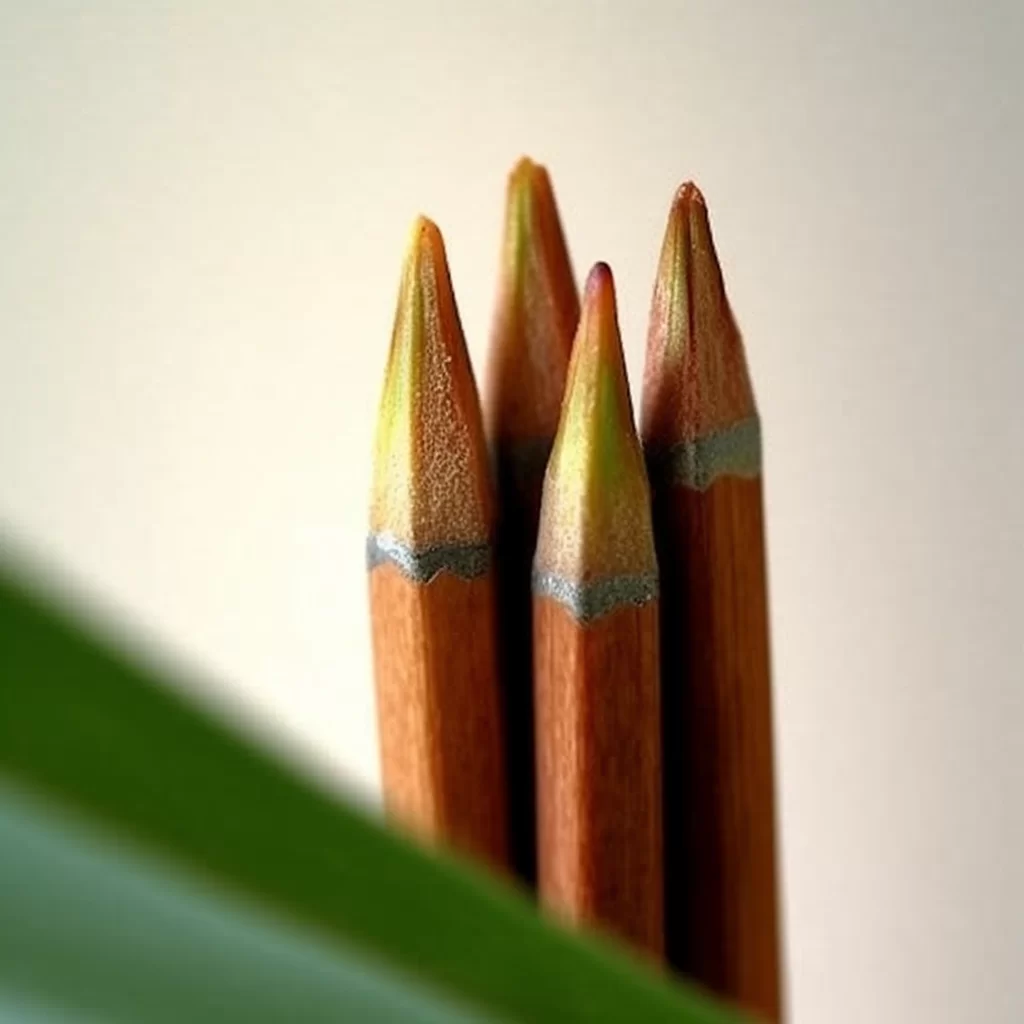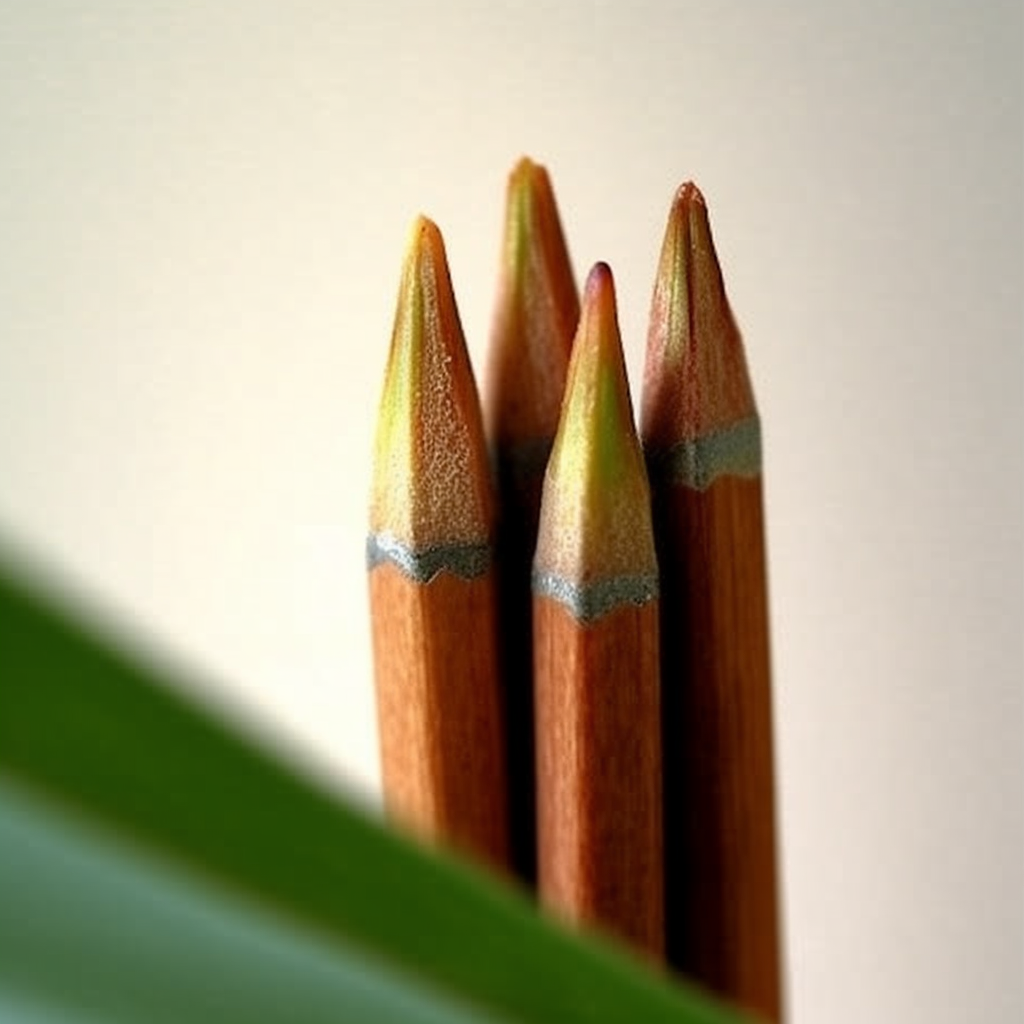Story of Day :
The Pencil Plant: A Complete Guide and Care Tips
As a garden blogger, I’m constantly on the hunt for plants that will make your garden stand out. And let me tell you, folks, I have found a real gem – the pencil plant. This bad boy is also known as Euphorbia tirucalli and it’s an absolute breeze to grow. But here’s the kicker…it looks like a PENCIL! You heard me right – this plant is so unique that it looks like something you’d find in your kid’s backpack. Every time I walk by my pencil plant, I can’t help but laugh at how ridiculous and awesome it is at the same time. Plus, imagine all the fun you could have with your guests as they try to figure out if those are really pencils sticking out of your garden bed or just some wacky new plant species they’ve never seen before? The possibilities are endless with this one-of-a-kind succulent!
What is Pencil Plant?
So, have you ever heard of the pencil plant? No, it’s not a plant that magically spits out pencils whenever you need one (although that would be pretty cool). It’s actually a succulent shrub that hails all the way from Africa and India. Yup, it’s an international superstar. And get this – it belongs to the Euphorbia family which has over 2000 species of plants! Talk about a big family reunion. From teeny tiny cacti to towering trees, this family has got it all. So next time you come across a pencil plant, give it some love and appreciation for being part of such an awesome botanical clan.
So, there’s this funky plant called the Pencil Plant. And why’s it called that, you ask? Well, let me tell you! It’s because its branches are long and skinny like pencils or sticks. Can you imagine having a tree in your living room that looks like a bunch of #2 pencils stacked on top of each other? Hilarious! Now, in the wild these babies can grow up to 30 feet tall! That’s taller than most houses! But don’t worry if you want one for your apartment – indoors they usually only grow to be 6-8 feet tall. Just make sure to have some extra-large pencil sharpeners on hand…you know, just in case.
 So, you want to know how to take care of your pencil plant? Well, don’t worry because it’s not rocket science. Firstly, you’re going to need some light in your life! Pencil plants love that bright sun rays but if you can’t swing that then give them some indirect light or partial shade – they’ll still be happy as Larry. Secondly, keep them warm and cozy between 60°F and 90°F (15°C-32°C) because these succulents don’t do well in cold temperatures below 50°F (10°C). Thirdly, make sure their soil is well-draining by adding sand, perlite or pumice into the mix for proper drainage because pencil plants hate being overwatered. Fourthly – yeah there’s a fourthly – feed those babies once every month during spring through Fall with a water-soluble fertilizer mixed in water. Avoid fertilizing during winter months unless you want to see your plant shrivel up like an old prune! Fifthly (bet you didn’t expect a fifth tip) don’t drown your plant with too much H2O – they are drought-tolerant after all and prefer dry soil before getting wet again. Finally, handle with care as the sap from this bad boy is toxic and can cause skin irritation or allergic reactions if ingested so keep it away from pets or kids – unless of course they’ve been acting up lately… just kidding!
So, you want to know how to take care of your pencil plant? Well, don’t worry because it’s not rocket science. Firstly, you’re going to need some light in your life! Pencil plants love that bright sun rays but if you can’t swing that then give them some indirect light or partial shade – they’ll still be happy as Larry. Secondly, keep them warm and cozy between 60°F and 90°F (15°C-32°C) because these succulents don’t do well in cold temperatures below 50°F (10°C). Thirdly, make sure their soil is well-draining by adding sand, perlite or pumice into the mix for proper drainage because pencil plants hate being overwatered. Fourthly – yeah there’s a fourthly – feed those babies once every month during spring through Fall with a water-soluble fertilizer mixed in water. Avoid fertilizing during winter months unless you want to see your plant shrivel up like an old prune! Fifthly (bet you didn’t expect a fifth tip) don’t drown your plant with too much H2O – they are drought-tolerant after all and prefer dry soil before getting wet again. Finally, handle with care as the sap from this bad boy is toxic and can cause skin irritation or allergic reactions if ingested so keep it away from pets or kids – unless of course they’ve been acting up lately… just kidding!
Propagation Techniques for Pencil Plants
Listen up, plant lovers! If you’re looking for a low-maintenance botanical buddy that’s easy to grow and reproduce, then let me introduce you to the Pencil Plant. This little guy is a real champ when it comes to propagation – cutting stems or leaves are just the tip of the iceberg. You can even try air layering techniques if you’re feeling adventurous! And who doesn’t love a good adventure? It’s like playing mad scientist with your plants, and let’s face it – we all need a little excitement in our lives. So go ahead and give those Pencil Plants some snips and slices. They’ll thank you for it by sprouting new growth faster than you can say “vegetative reproduction.” Plus, think of all the fun conversations you’ll have with your friends about your newfound expertise in propagation methods. Who knows? Maybe they’ll even ask for some cuttings of their own. It could be the start of a whole new hobby – one that involves less screen time and more green time. So what are you waiting for? Get out there and start snipping those Pencil Plants!
- Stem Cuttings:To propagate through stem cutting gently remove a pencil-like branch from the mother plant using sharp shears making sure there is no sap on the cutting. Allow the base of the cuttings to heal for 24 hours after which it can be planted into fresh potting soil kept moist until new growth appears indicating successful rooting which takes around four weeks time.

Alright folks, gather around because I have compiled the most hilarious and outrageous uses for our beloved pencil plant. Sure, it might be an ordinary houseplant to some but to us creative minds out there, it’s a canvas waiting to be transformed into something extraordinary!First up on our list of suggested uses is using the leaves as makeshift bookmarks. Who needs a boring old piece of paper when you can use these vibrant green beauties? Plus, every time you crack open that book you’ll get a whiff of that fresh plant scent.Next up we have using the stems as mini swords for your action figure collection. Forget those flimsy plastic swords, give your toys some edge with these sturdy stems.If you’re feeling extra adventurous try making your very own pencil plant crown! Just snip off a few leaves and wrap them around your head like royalty. It’s perfect for those days when you need an extra boost of confidence.But wait there’s more! Have some fun with this spiky plant by dipping the tips in bright paint and using them as unique stamps for arts and crafts projects. Your friends will be jealous of how creative and resourceful you are.Lastly, if all else fails just use it as an excuse to chat with strangers about its quirky name- “Pencil Plant”. Who knows where this conversation may lead? Maybe they also share an appreciation for unconventional houseplants or maybe they’ll just think you’re nuts- either way at least it’s entertaining!So go ahead
- The pencil plant works well indoors as well as outdoors making it an ideal choice for landscaping projects such as rock gardens, patios, walkways and large indoor spaces like malls, airports due to its sculptural shape and interesting texture.
- The branches make fantastic additions to floral arrangements adding height and unique texture!
Alright folks, it’s time to wrap up this wild ride we call an essay. After all the blood, sweat, and tears (mostly tears) that went into crafting this masterpiece, I think we can all agree that it deserves a proper send-off. So let’s take a moment to reflect on what we’ve learned here today: nothing. Absolutely nothing. But hey, at least we had a good laugh along the way.In conclusion (cue dramatic music), despite the fact that I still don’t know what the heck I’m talking about or why I even started writing this in the first place, I hope you enjoyed reading my ramblings as much as I enjoyed writing them (which is to say not at all). Now go forth and spread your newfound knowledge to anyone who will listen (though be warned they may not be listening for long). As for me? Well, let’s just say it’s time to crack open a cold one and forget this ever happened. Cheers!
If you’re on the hunt for a quirky plant that’s as low maintenance as a sloth on a Sunday, then behold the pencil plant! Not only does it resemble an oversized writing utensil, but it can also jazz up any outdoor or indoor space with its distinct flair. But hold your horses there partner, this bad boy may be toxic so handle with care. And if you want to expand your pencil plant posse, simply snip off a stem and propagate away like there’s no tomorrow. So go ahead, add some fun and funky vibes to your greenery collection with the trusty pencil plant!
